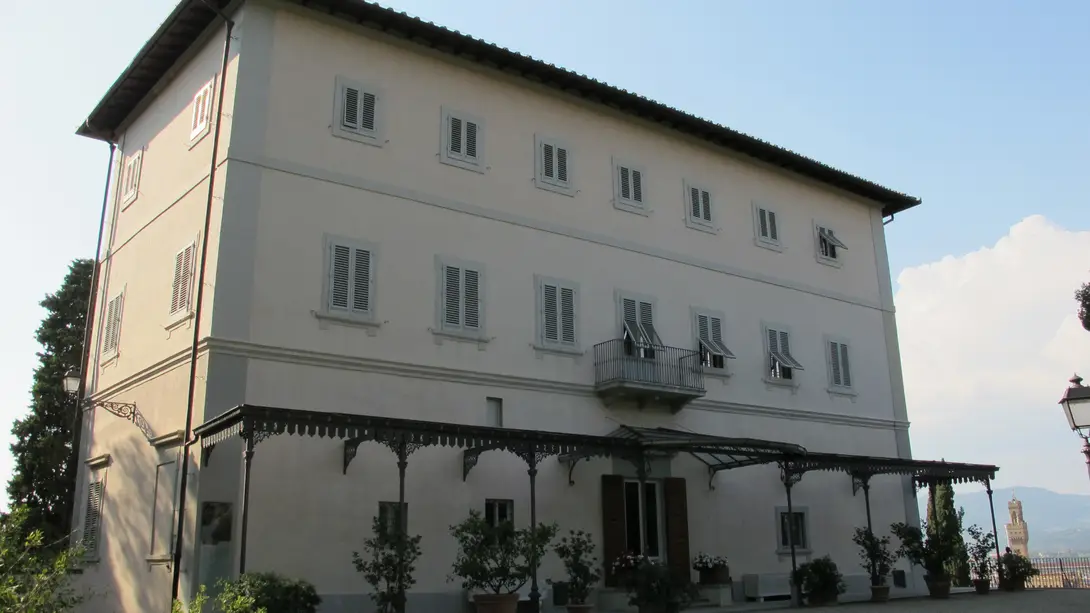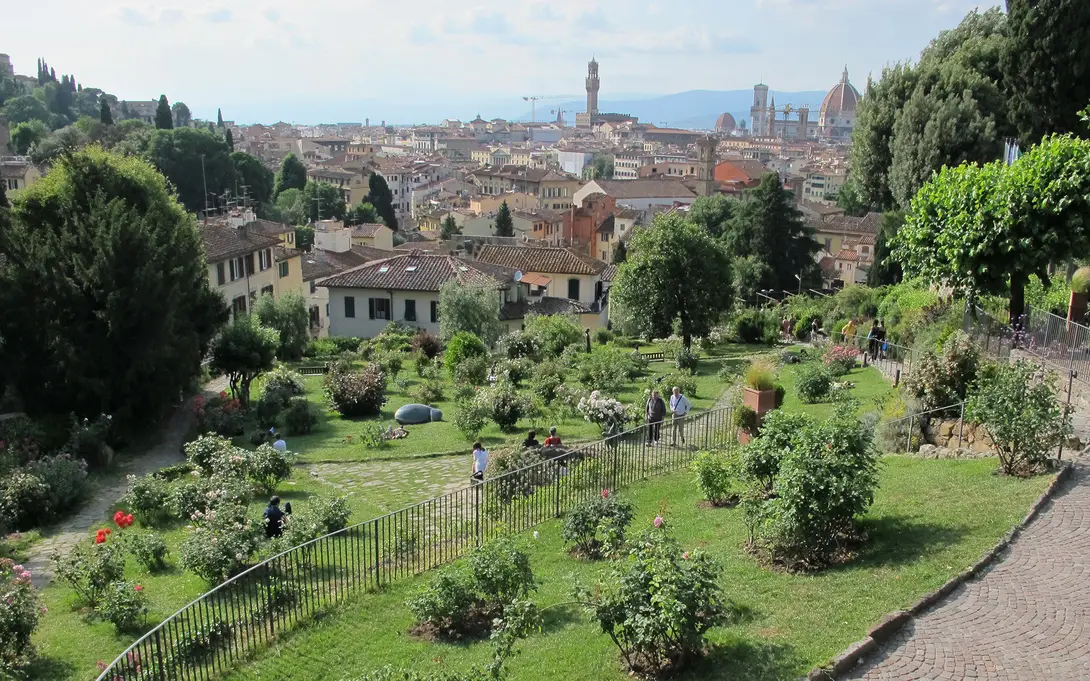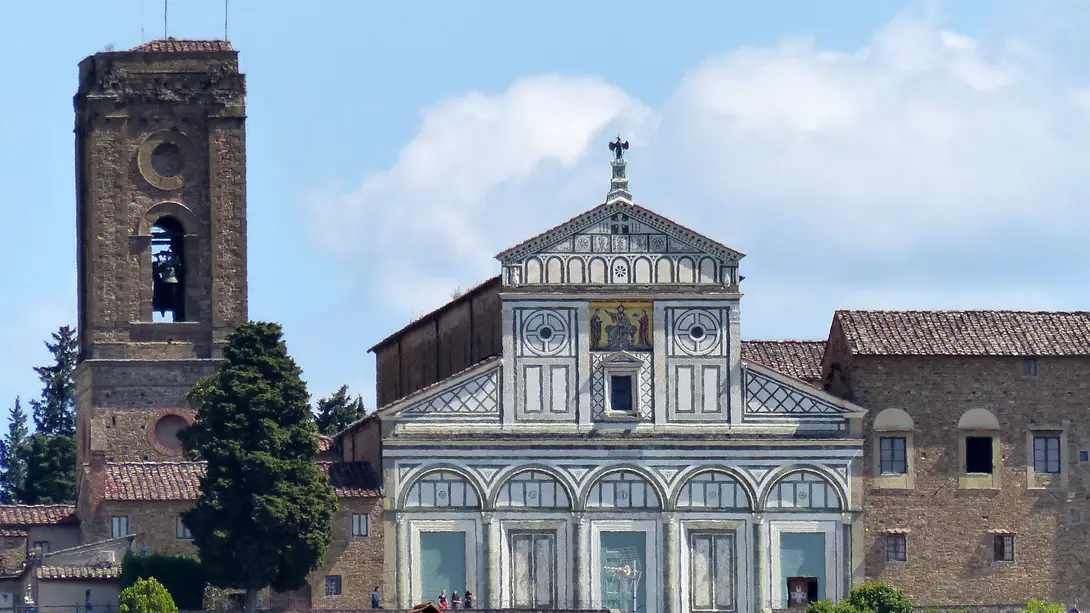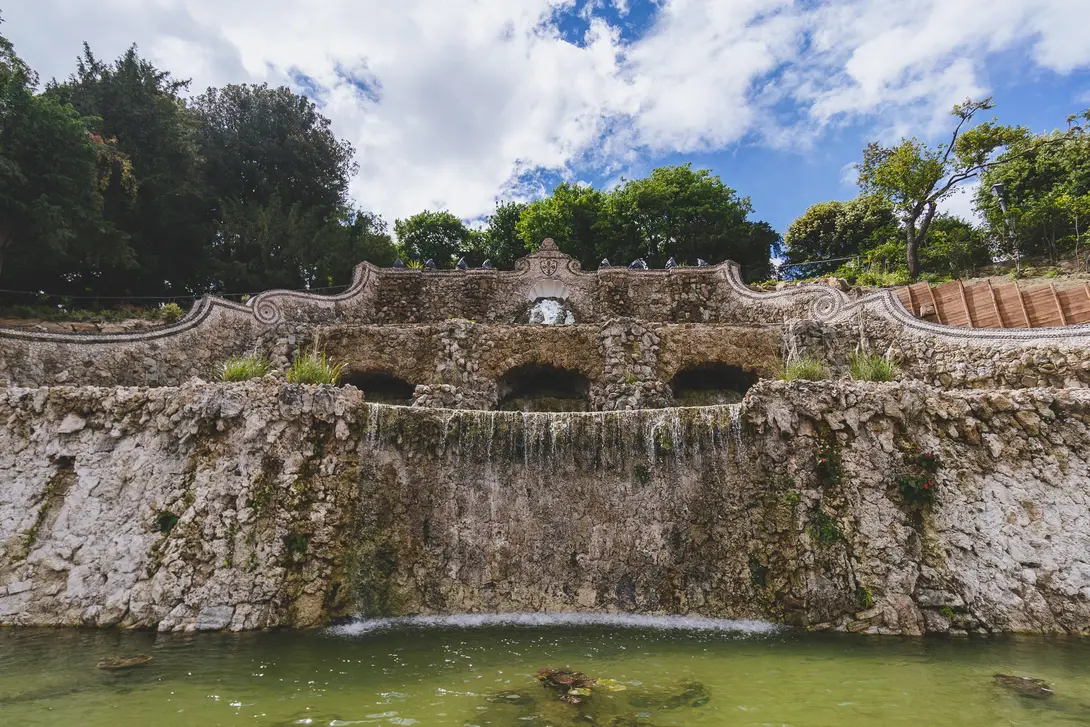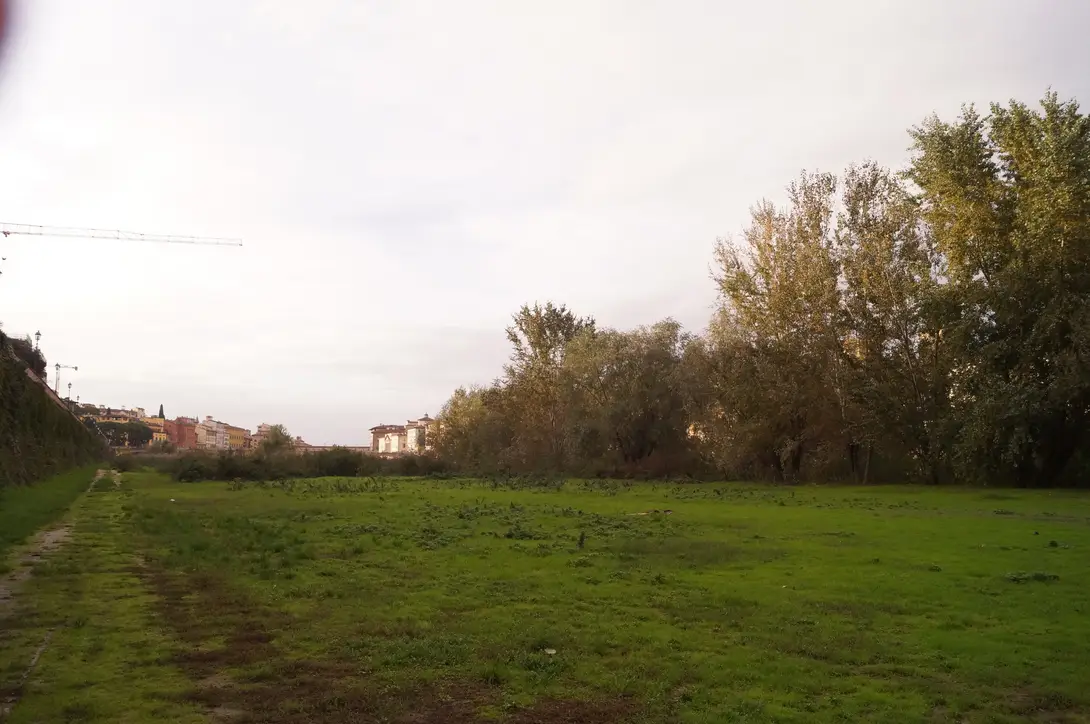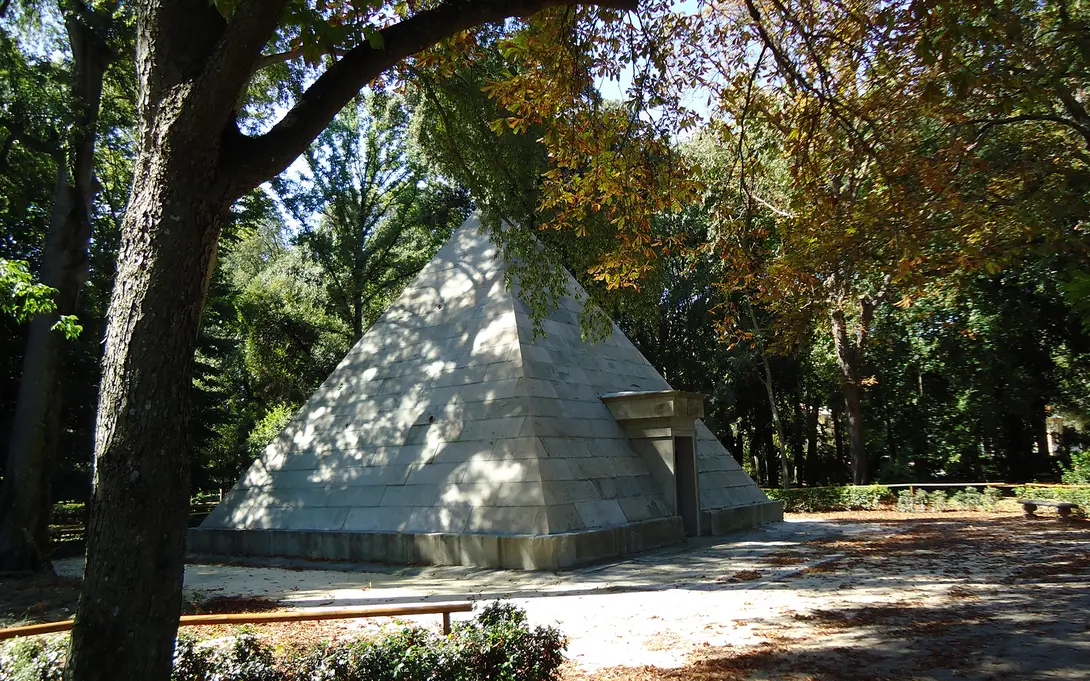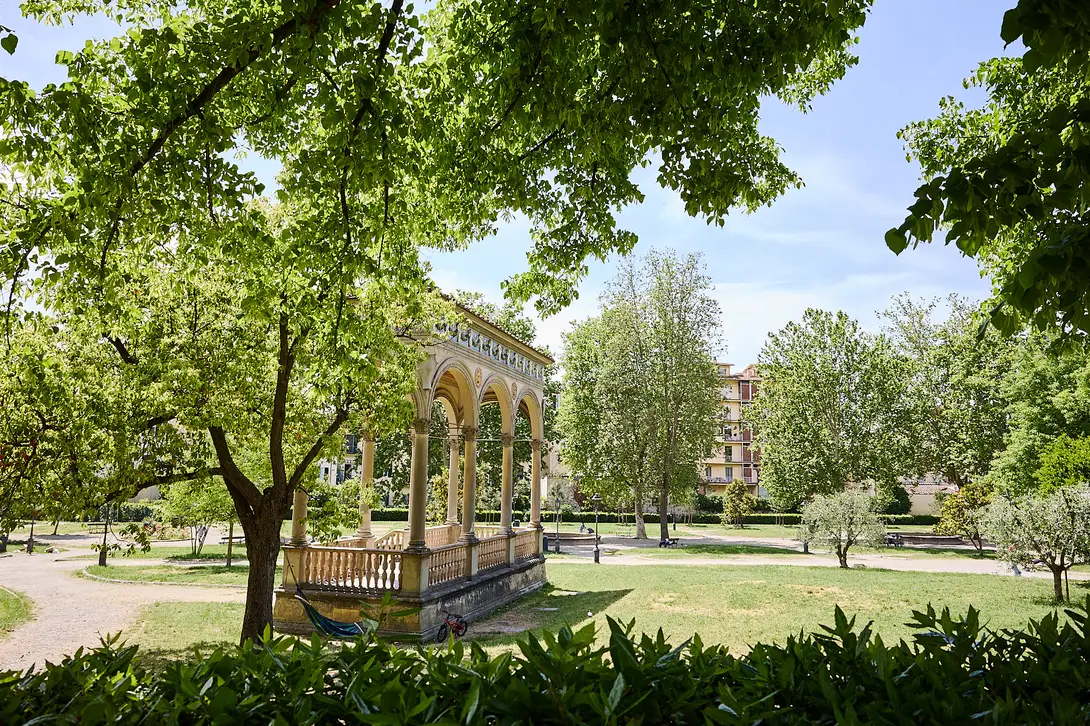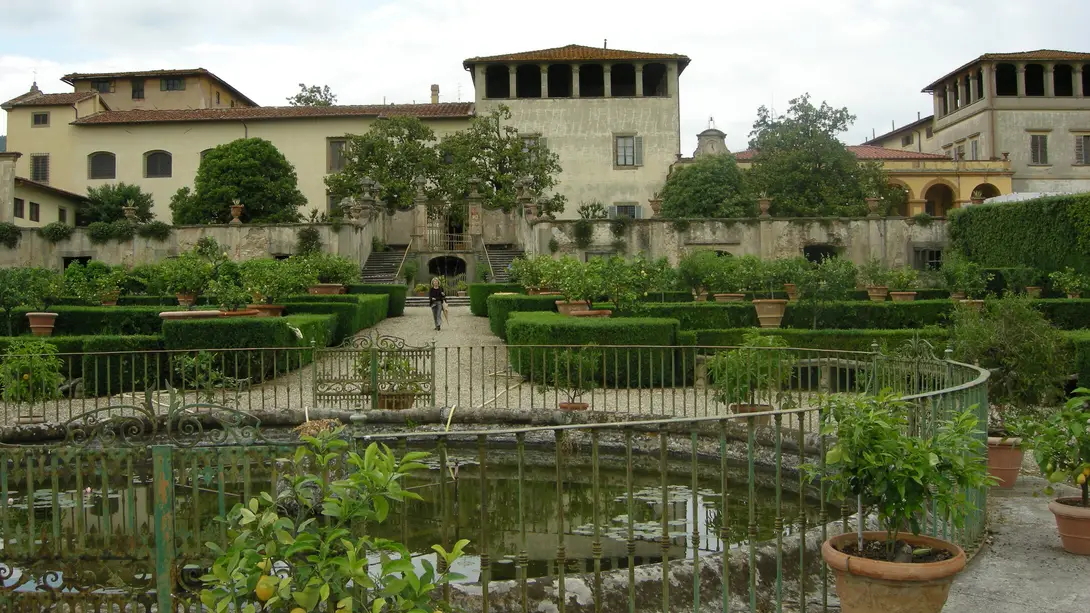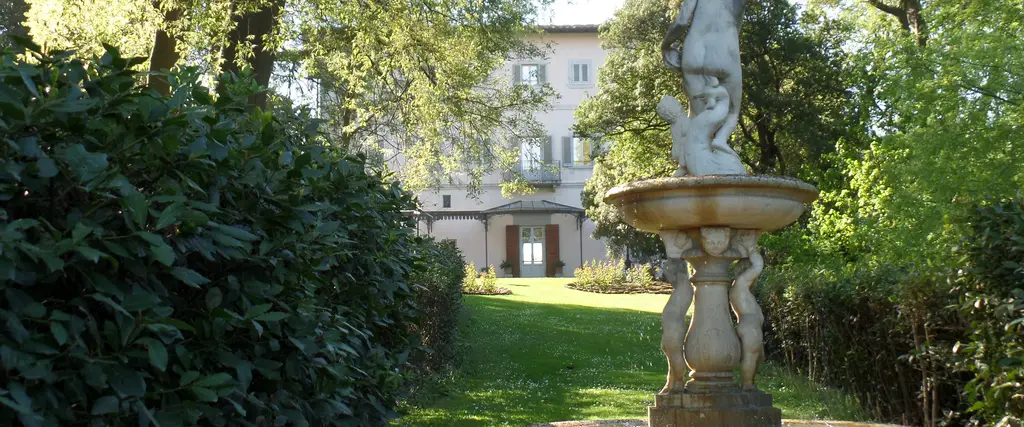
An itinerary through breathtaking green areas and panoramas
Warmer days mean spending time outdoors: why not visit some new places, like the panoramical gardens?
Here’s a short itinerary through the most beautiful public and private gardens that can boast an amazing view as well as a thriving nature.
Gardens up high
One of the most fascinating ones is undoubtedly Bardini Garden: it unwinds along a hillside, offering many perspectives over the city. and it’s dominated by Villa Bardini, a temporary exhibitions’ venue.
The Garden of Roses like Bardini’s was built on the side of a hill. Flowers, and especially roses, are sided by the dreamy sculptures realized by Jean Michel Folon. It’s the perfect place to relax and enjoy a beautiful view while leaning on the grass.
Just above this colorful area, there’s piazzale Michelangelo and, higher, the beautiful romanic church of San Miniato al Monte.
To go back down to the city center, the easiest way is to follow Poggi’s Ramps, a scenographic staircase enriched by fountains and light effects (by night).
Bellosguardo is another hill from which to admire the view. There are no gardens here, but the walk up to the viewpoint is quite romantic.
Along the river
Along Arno river, by San Niccolò tower, there’s the so-called Third Garden, a large green area grown on the riverbank.
And also on the riverbank, but on the opposite side, going west, there’s the widest public space of the city, the Cascine Park, perfect for long strolls, for some outdoor exercise and for fresh air during the summer. The park also houses sport facilities and concert arenas (Firenze Rocks takes place here in June).
Outside the city walls
The last recommendation of this itinerary is just a few steps far from the city center, at the beginning of via Bolognese: it’s Giardino dell’Orticoltura, famous for the beautiful tepidarium designed by Giacomo Roster in glass and iron, venue for the colorful exhibition of Plants and Flowers, taking place twice a year (at the end of April and at the beginning of October).
A path beginning at the back of the large greenhouse, winds up to a panoramical garden called Orti del Parnaso, where you can sit on a bench and enjoy the all-encompassing view of Florence from a different vantage point… but beware of the dragon!
The public opening of the garden of Villa la Quiete is imminent. We are in the Careggi area and the villa was the buen ritiro of several women of the Medici family. From here the view is over the plain to the west of the city centre
Comune di Firenze
Les lieux
Étapes
Bardini Villa
Villa Bardini, within the magnificent garden overlooking the skyline of Florence, was built in 1641 by Gherardo Silvani for Francesco Manadori, it recalls the Houses of Delight common in Florence at the end of the 16th and first half of the 17th centuries, which were surrounded by cultivated land and ornamental parks. The original core of the building was subsequently enlarged and in the early 20th century the villa was bought by the antiquarian Stefano Bardini, who added an extra floor.
It houses the Museo Pietro Annigoni, the Library of theSocietà Toscana di Orticultura and many temporary exhibitions.
The museum organizes occasionally guided visits, workshops and activities for children, families and young visitors
Rose Garden
The Rose garden is a green terrace right below Piazzale Michelangelo overlooking the historic centre of the city and enjoying a breath-taking view equal in beauty to that from Forte Belvedere. The Garden has been entirely redesigned better to display the works by Folon. Visitors will be able to admire the unique view of Santa Maria del Fiore and Palazzo Vecchio through the big suitcase of Partir; they will rest next to Folon’s man on the timeless bench of Je me souviens; they will stroke the Chat, the large cat sleeping on the grass among rosebushes.
In the garden there is also a ... corner of Japan! The Japanese garden was donated to the Municipality of Florence by the twin city of Kyoto.
Basilica di San Miniato al Monte
San Miniato al Monte, founded in 1018, is one of the most extraordinary exemples of Romanesque architecture in Tuscany, and stands on the top of a hill overlooking the city, offering a great panorama. The green and white marble facade itnroduces to the interior, which has a mystical atmosphere: the ancient crypt, the inlaid floors of the Basilica and the imposing mosaic in the apse depicting Christ (both 13th century); the Chapel of the Cardinal of Portugal is a Renaissance masterpiece.
Le Rampe - the Ramps
At the end of the 19th century, the construction of the Viale Michelangelo also included the Ramps, which rise from the Arno towards the hill with a consolidation function. This neo-Mannerist architecture was realised by Giuseppe Poggi, who created a succession of staircases, grottoes and water features. From above, the water passes through the first three grottoes, and then flows downwards into five other grottoes until it gathers completely at the large pool of the Porta San Niccolò.
The whole area is also a vertical garden, which is very pleasant, while the water features are highly scenic, especially at night when they are illuminated
piazza di bellosguardo
The Third Garden
The Third Garden is an unusual park on the Arno river bank, very close to the idea of a small nature reserve, where fauna and flora regain their rightful place within the urban setting.
This is why it is possible to find within it tree and herbaceous species, as well as birds and small animals, typical of the river environment of the Arno, which, however, have seen a progressive shrinkage of their habitat in recent decades due to indiscriminate anthropisation.
Cascine Park
Le Cascine was once the property of Alessandro and Cosimo I de’ Medici (sixteenth century) who purchased the land, using it as a hunting ground and a place to farm and breed cattle. During the 18th century, thanks to Pietro Leopoldo, the Habsburg-Lorraine Grand Duke of Tuscany, the area became accessible to the public, although only in some occasions (Court Feasts, Ascension day). In the same period (1785) the architect Giuseppe Manetti created important buildings such as the “Palazzina Reale” and the “Ghiacciaia-Piramide”.
Elisa Baciocchi, sister of Napoleon, Grand Duchess of Tuscany transformed definitely the Cascine in a public park (1807-1815), thus giving the city a vast green area. During the second half of the 19th century the architect Giuseppe Poggi planned a huge square (the present Piazza Vittorio Veneto), originally intended to be the entrance area to the park. The “Scuola di guerra aerea” is the last, most important architectural realization; it was created in 1938 by Raffaello Fagnoni.
In this big park, it is possible to have a picnics with children. Furthermore, you can rent bicycles or skates and enjoy summer in Le Pavoniere swimming pool.
Giardino dell'Orticoltura
In 1854 the "Società Toscana d'Orticultura" (Tuscan Society of Horticulture) was constituted. In the second half of the 19th century the garden got larger and Giacomo Roster designed the big tepidarium, inaugurated in 1880. The little loggia "Bondi" by the architect Castellucci was realized in 1911.
The Municipality of Florence bought the garden in 1930 and designated the area as a public garden. In 1990 the "snake" was completed with decorations of different materials following the project of Marco Dezzi Bardeschi.
Inside the garden there is also a playground for children.
Villa La Quiete
La Quiete villa (the Quietness) named after the fresco called “La Quiete che domina i venti” painted by Giovanni from San Giovanni in 1632.
Former owners were the Orlandini family, then Villa La Quiete belonged to Niccolò da Tolentino from 1438, which he was gifted of by the Republic; in 1593, it was bought by Pier Francesco dei Medici and later it was given to Cosimo I, who gave it to the commanders of the Order of Santo Stefano.
As it was purchased by Christine de Lorraine in 1627, the season of greatest splendor started for the villa; when she died in 1636, grand duke Ferdinand II became her heir and granted it to Eleonora Ramirez de Montalvo. The noblewoman lived in the villa from 1650 and intended it as a country retreat for the congregation of nuns that she founded, called Montalve.
In 1659, Vittoria della Rovere, a friend of Eleonora’s, took the institute under her protection and promoted the building up of the church in 1688. In 1724, Anna Maria Luisa dei Medici, the last descendant of the family, moved her residence right to La Quiete.
The Villa is enriched by an 18th-century historic garden, open to the public.
